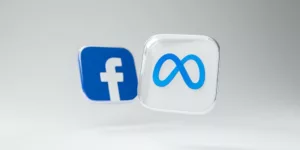Meta, previously known as Facebook, had a perfect storm opportunity. While Elon Musk was effectively killing Twitter real time and forcing most of his users and advertisers to look for alternatives, Facebook quickly surfaced Threads and immediately captured 100M users, showcasing that if Zuckerberg had just fully funded this service, Threads would have most, if not all, of Twitter’s old revenue stream.
Sadly, Zuckerberg once again didn’t execute quickly. There is still time to correct this mistake. If not, Threads is likely to fail. Let’s talk about what Zuckerberg and Meta did wrong and how they might correct it before Threads follows Myspace into obscurity.
Replacing Twitter
To replace any service, you must not only convince current users to leave their old service (something Musk has been very good at doing at Twitter and even changing the name so the site looks like a Port site), but you must also create a place for them to land that is very similar to what Twitter provides. Twitter has things like hashtags and its platform runs on both mobile and PC platforms.
Zuckerberg left out anything like a hashtag and he rolled the application out on mobile platforms only, even though those of us that were posting on Twitter most of the time generally did so off our work PC, largely because it’s easier to post links and interact with something that is running on the same platform that you are working from.
Someone at Facebook must not have realized how many Twitter users used PCs to interact with the service. There is a workaround to install it on a PC, but it isn’t for the faint of heart. Threads didn’t really need a PC app. Theyt could have just put up a web interface and that would have been fine. Given Facebook has a massive and successful web presence, you’d think they’d at least have a web interface for Threads, but they don’t.
Ideally, Threads should have been subordinate to Facebook, Meta’s more popular app, and not Instagram which hasn’t been doing as well. Even getting Threads to work is somewhat problematic because it uses your Instagram password but, if you use Facebook to log into Instagram (which I did), getting Threads to accept the Facebook password was a problem. I got in, but it was neither quick nor easy, suggesting Meta’s human factor folks either weren’t engaged or they don’t really know what they are doing (I’d bet the former).
You must also market the new service so that negatives, which will always exist in a switch because you can’t just clone Twitter, don’t become a major impediment to people becoming familiar with the service. It continues to amaze me that a service like Facebook or Threads that lives off ad revenue doesn’t know how to market its own products. I should be seeing things on Facebook that would pull me to Threads, but I don’t.
Wrapping up:
Threads could have and might still (it isn’t dead yet and Musk continues to upset Twitter users) displace Twitter like Facebook displaced Myspace years ago. However, a failure to execute, market and assure the success of Threads has all but destroyed this opportunity. To be truly successful Threads needs to be easier to join, it needs to be marketed until it gets to a sustained critical mass, and it needs to be far more like what Twitter was to capture and hold a large audience.
Fortunately, Musk continues to motivate Twitter users to leave, so Zuckerberg has some time to fix his alternative. But if he continues to fail to execute, this will simply continue to showcase that Zuckerberg is a one-trick wonder who gained his position mostly by luck rather than skill and who hasn’t learned enough yet to create successful new offerings that can capture and hold a large audience. It is sad to watch because, like most of you, I wanted Threads to work because I’m fed up with Musk. But Zuckerberg just couldn’t step up enough to make it happen yet. I hope that Threads doesn’t become the next Myspace.








